Liesenbrücken
Bridges to nowhere
For the Liesenbrücken are old, the first three built between 1890-92 before their bigger brother took up a protective position beside them in 1896. The two easterly survivors remain, despite their lack of industry, outstanding examples of 19th century industrial engineering.
The initial four iron truss bridges were built to orders from the Königliche Eisenbahndirektion, the Prussian state railway operator, to expand the line from Berlin to Stettin (now the Polish city of Szczecin). The engineers were B. Hildebrand and K. Bathmann. History does not seem to have recorded their full first names anywhere.
The Liesenbrücken were constructed over a huge roundabout. The first three bridges were single-track, spanning 64 to 82 meters, while the fourth was a double-track behemoth with towering trusses still spanning 92 meters across the roundabout.
Function was combined with architectural design. The upper beams curve elegantly in an arc above vertical columns crossed by diagonal struts getting thinner as they strut their stuff toward the center of the bridge. The trains were able to zoom across the intersection on one of the four bridges without a worry in the world. Those were the days!
The magnificent Stettiner Bahnhof, which opened in 1842, was just a stone’s throw down the road. It was one of Berlin’s busiest train stations with rail services to Stettin, Swinemünde, Sassnitz on Rügen, Kolberg in Pomerania (now the Polish city of Kołobrzeg), and the famous city of Königsberg, the Prussian capital, now Russia’s Kaliningrad.
Locals used to call the Stettiner Bahnhof the “Ostseebahnhof” (Baltic Station) or “Ferienbahnhof” (Holiday Station) because of all the escapes from metropolis life it provided.
Apparently homeless people and laborers who had just moved to the metropolis used to live in tents or wooden shelters under the Liesenbrücken in the 1920s. Those who could afford to get out did so with glee, while those with nothing were stuck while waiting for the city to deliver on its promise.
The bridges were called “Schwindsuchtbrücken” (consumption bridges) due to the unsanitary conditions. Berliners never call anything by its proper name.
The war put an end to the Stettiner Bahnhof and its destinations, most of which ended up leaving Germany. The war was ultimately responsible for the Liesenbrücken’s demise too.
The station was renamed Nordbahnhof in 1950 in a futile effort to forget the departed Stettin. The trains stopped in 1952, and the war-damaged station building was finally torn down in 1962, by which time its fate had been sealed due to its proximity to the border area. It ended up becoming a “ghost-station” and now only the S-Bahn passes through. So don’t vote for Nazis, kids. Do not give them one second of your time.
The Liesenbrücken had front-row seats to all these sorry events. The Berlin Wall passed underneath. The only visitors for many years were members of the Nationale Volksarmee (NVA), or East German National People’s Army, who used to keep watch from a neighboring watchtower.
The Berlin Wall skirted along Liesenstraße from the Chausseestraße checkpoint, turned right under the bridges and down beside Gartenstraße to where the visitor center is today. You can still see some of the old Berlin Wall off the tourists’ beaten path beside the Liesenbrücken.
Naturally, neither the war nor subsequent division of the city were good news for the Liesenbrücken. The two westernmost single-track bridges were replaced by simple overpasses built on supports (the cheats!) between 1956-57. The tracks were taken from the surviving Liesenbrücken and they weren’t used again after that. Today’s S-Bahns still use the unimaginative boring replacement bridges.
The Liesenbrücken have the coveted Denkmalschutz, so they can’t be simply knocked down or blown up. But that hasn’t stopped investors’ plans to fill the big Liesenbrücke with a glass hotel with 340 rooms and an “event space” for 800 people.
Just ask the Gasometer or countless other Denkmalschutz recipients – it ain’t all it’s cracked up to be.
Meanwhile, Bündnis Liesenbrücken and other campaigners are blue in the face asking for both bridges to be reopened for pedestrians, joggers and cyclists as a link between the park at Nordbahnhof to Volkspark Humboldthain. The Nordbahnhof park architects already suggested the link in 2005. But the Berlin Senate is yet to cough up the money for the project.
So we wait. The Liesenbrücken have been waiting nearly 70 years. They watched a new country come and go. They can easily wait a few more.
LOCATION AND ACCESS (HOW TO FIND GUIDE)
- What: The Liesenbrücken, two magnificent industrial railway bridges that have been around for more than 120 years and abandoned for most of them.
- Where: Gartenstraße 65, 13355 Berlin.
- How to get there: Get the S-Bahn to Humboldthain, walk down and to Nordbahnhof, and walk up through the park. The bridges are not far from either. Once the weather warms up, you can also easily get here by bike. Here it is on a map.
- Getting in: There ain’t no getting in, but if you hop the fence to the side (be careful!), you can get closer for a better look.
- When to go: Go during the day to survey the ironwork, or at night if you want to toast it with a Späti beer under the moonlight.
- Difficulty rating: 2/10.
- Who to bring: Bring some local politicians so you can berate them for leaving these supposedly protected monuments to rust and decay.
- What to bring: Bring your camera and a few beers. Bring warm clothes and gloves too if you plan on visiting anytime soon.
- Dangers: The bridges themselves are quite dangerous if you planned on climbing them, but don’t do anything stupid like that and you should be fine.
Keep them wagons rollin’
Tempelhof
West Berlin’s lifeline during the Soviet Blockade, Tempelhof Airport has since become the city’s biggest park. Berliners will fight to keep it that way.
Flugplatz Schönwalde
Germany’s Luftwaffe used Flugplatz Schönwalde for the war. The Soviets took over afterward and left their traces after abandoning the airfield in 1992.
Flugplatz Brand
Flugplatz Brand was strategically important for the Soviet Air Force. Thankfully its battalions of flying fighters remained on ice for the duration of the Cold War.
4 Comments
Trackbacks/Pingbacks
- Liesenbrücken — Abandoned Berlin – The Bridgehunter's Chronicles - […] Liesenbrücken — Abandoned Berlin […]
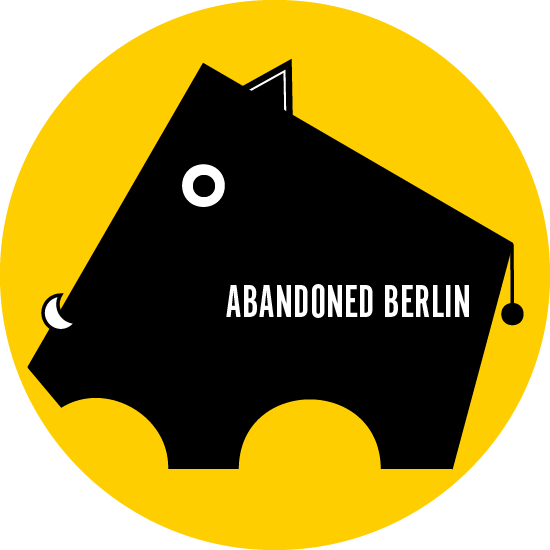


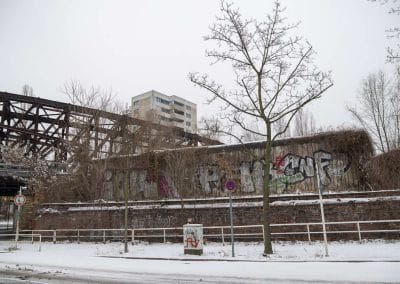

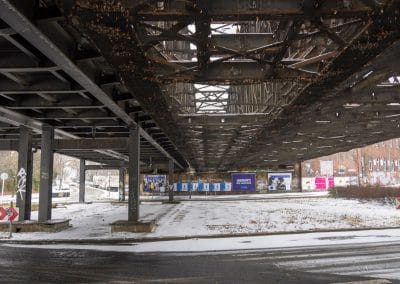
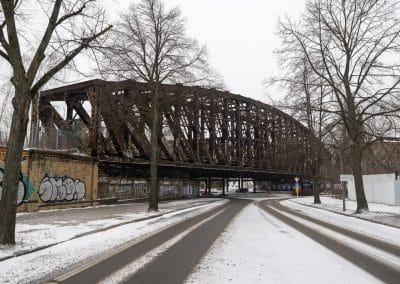
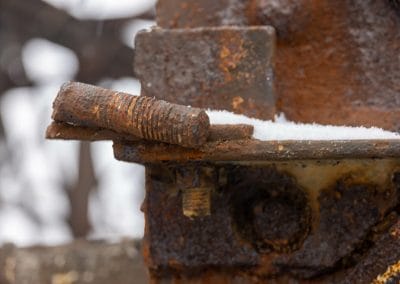
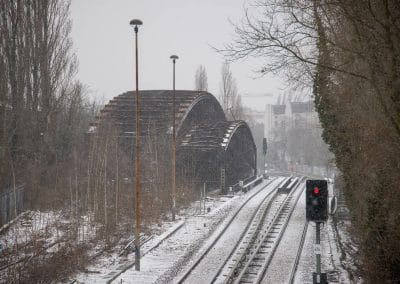
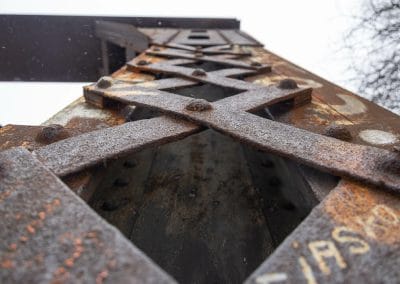
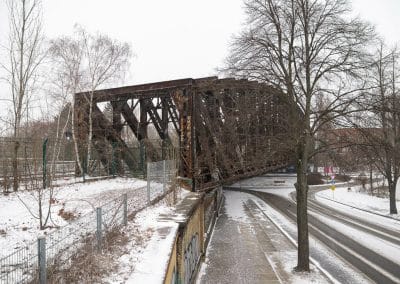
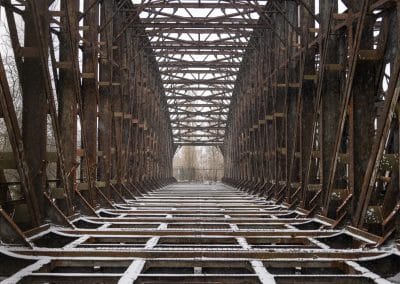
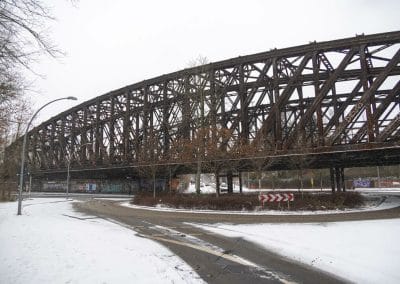
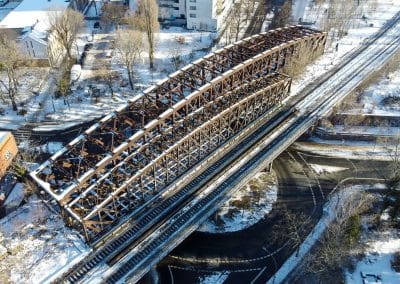



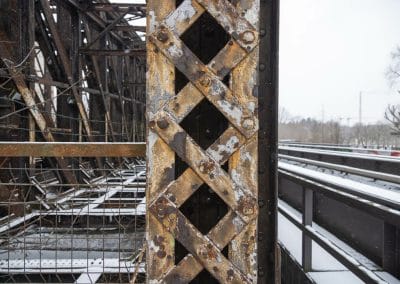
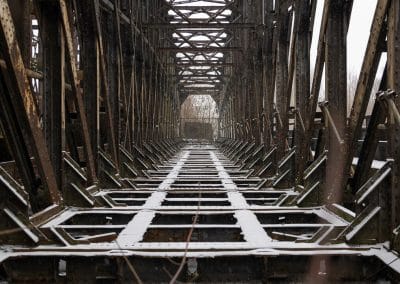
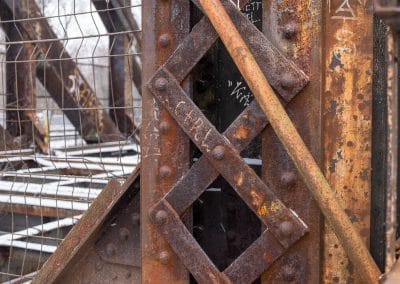


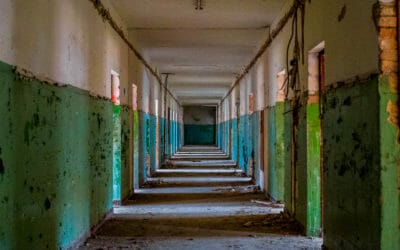

Very cool! I live around the corner and cycle through several times a week, anytime I go South really, but never knew the history. Will think about this next time I pass by.
Excellent report from a quite rightly pissed writer.
I’ve always considered these rusting hulks as an eyesore until reading this story.
The (so-called) “Denkmalschutz” stops the city from ripping them down, and destroying yet another of their historical landmarks. That is until one realises that the ruling party simply abandons them, (rather than spend all that “lovely money” to refurbish/renovate), and waits for them to become dangerous, then blames the predecessors for doing nothing!
An excellent example are the American “golfballs”!
or.
Just take a walk along the “Mauerweg” which remembers the route of the Berlin wall!
See how the people “who know the right people” or have enough money, simply block the (again, so-called Denkmalschutz) with their car parks and “private” roads and gardens, and the minimal and obvious reluctant up-keep of the paths/tracks!
I was left speechless when I saw that bridge the first time (2010). We didn’t expect to find an iron bridge at all on our “patrol track/Mauerweg tour”. I didn’t know the exact history – thank you for telling the story here. I thought all the damage was caused by The Berlin Wall and the divided city. In 2010 we went on a ghost station tour in Berlin. After having visited Nordbahnhof we ended up with a walk on the grounds of the former Nordbahnhof station. (From Denmark🇩🇰)
You’re very welcome! Thanks for your comment 🙂